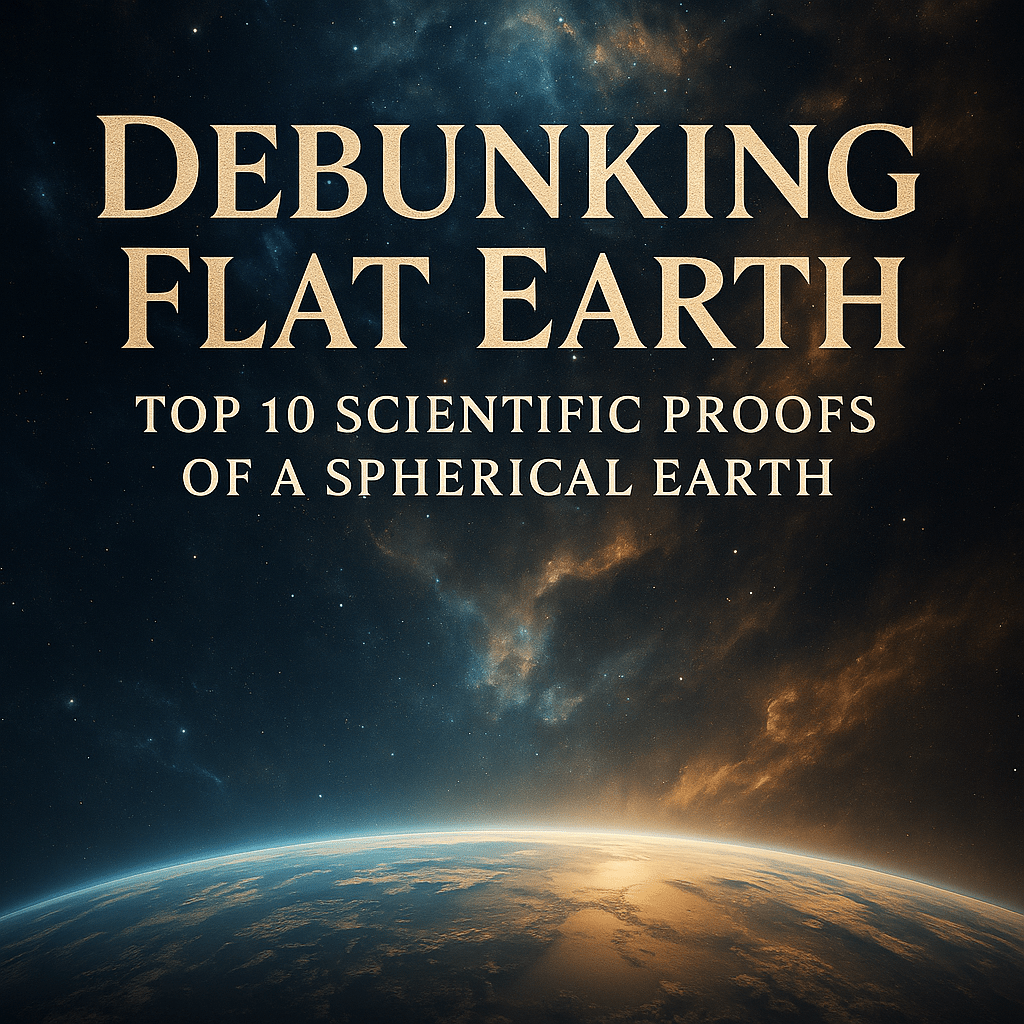
Debunking Flat Earth: Top 10 Scientific Proofs of a Spherical Earth
Gary Whittaker
Debunking Flat Earth: Top 10 Scientific Proofs of a Spherical Earth
Introduction
In the ongoing debate between the spherical Earth model and the Flat Earth theory, scientific evidence heavily favors the former. This article presents ten well-founded examples that effectively debunk Flat Earth claims, showcasing phenomena that align with a spherical Earth.
1. Curvature Visible from High Altitudes and Landmarks High-altitude observations, such as from balloons and aircraft, reveal Earth's curvature. At around 35,000 feet, like in a commercial jet, this curvature is noticeable. A practical example is the increased visibility range from the Eiffel Tower (273 meters high), which is much greater than from the ground, indicating a curved surface. Flat Earth theory, asserting a flat horizon at all altitudes, fails to explain this observable phenomenon.
2. Ships Disappearing Over the Horizon Ships vanishing bottom-first when moving away and reappearing top-first is evidence of Earth's curvature. Simple observations, even from a beach, can confirm this. Flat Earth explanations like perspective or atmospheric refraction don't account for this consistent observation, aligning with a spherical Earth's expectations.
3. Varied Constellations Visible from Landmarks Constellations differ by latitude; for example, the Southern Cross is visible only in the Southern Hemisphere. Observations from known landmarks like Cape Horn provide distinct celestial views compared to the Northern Hemisphere, inconsistent with Flat Earth models.
4. Time Zones and Day/Night Cycle from Landmarks Time zones and the day/night cycle, observable from landmarks like the Great Wall of China, demonstrate Earth's rotation and spherical shape. Flat Earth theories, proposing a spotlight Sun, can't replicate this global phenomenon.
5. Lunar Eclipses from Different Locations Lunar eclipses show Earth casting a circular shadow on the Moon. Observations from diverse locations, like the Pyramids of Giza, consistently show a round shadow, indicating Earth's spherical shape, challenging Flat Earth eclipse models.
6. Gravity's Behavior Observed at Landmarks Gravity's uniform pull is observable at landmarks like the Leaning Tower of Pisa, where experiments demonstrate objects falling at the same rate, supporting a spherical Earth. Flat Earth theories, denying gravity, can't replicate these consistent findings.
7. Flight Paths Involving Landmarks Commercial flight paths, such as those over the Sahara Desert, are shorter on a globe than a flat map, confirming the Earth's spherical nature. Flat Earth models can't adequately explain these efficient routes.
8. The Coriolis Effect Observed in Large Water Bodies The Coriolis Effect, evident in large water bodies like the Great Lakes, causes differing spin directions in different hemispheres, supporting a rotating spherical Earth, a phenomenon Flat Earth theories overlook.
9. Geodetic Measurements from Famous Landmarks Geodetic surveys, including those from landmarks like Mount Everest, confirm Earth's curvature. Flat Earth theories alleging conspiracy or error in measurements are contradicted by these consistent findings.
10. Satellite Imagery and Space Exploration Evidence Satellite images and space exploration evidence, such as photos from the ISS, show a round Earth. Observations from space tourism flights further debunk Flat Earth claims of image manipulation and conspiracies.
Conclusion
These ten points, incorporating simple observations from landmarks and everyday phenomena, robustly support the spherical Earth model and counter Flat Earth claims. This evidence, grounded in observable reality and scientific principles, is accessible and understandable, debunking Flat Earth theories and affirming our planet's true shape.
Ready to Launch or Level Up Your AI Music Journey?
🔹 Start Here – The Suno AI Creator Guide:
https://jackrighteous.com/pages/suno-guide-getting-started
🔹 Learn to Brand with Sound – GET JACKED Into Suno Branding:
https://jackrighteous.com/pages/start-ai-music-branding
🔹 Unlock the Full Anthem Path – GET RIGHTEOUS System Access:
https://jackrighteous.com/pages/get-righteous-anthem-guide
(Requires one of the following:
– https://jackrighteous.com/products/get-jacked-full-pro-kit
– https://jackrighteous.com/products/get-jacked-pro-ai-music-kit
– https://jackrighteous.com/products/sanctuary-digital-download-support-the-album-build)
